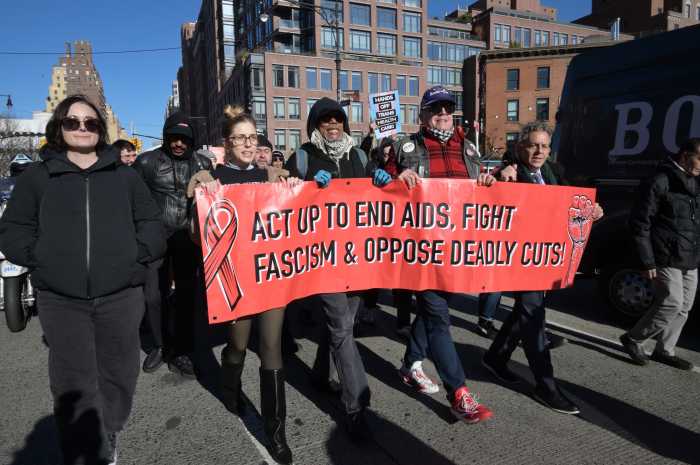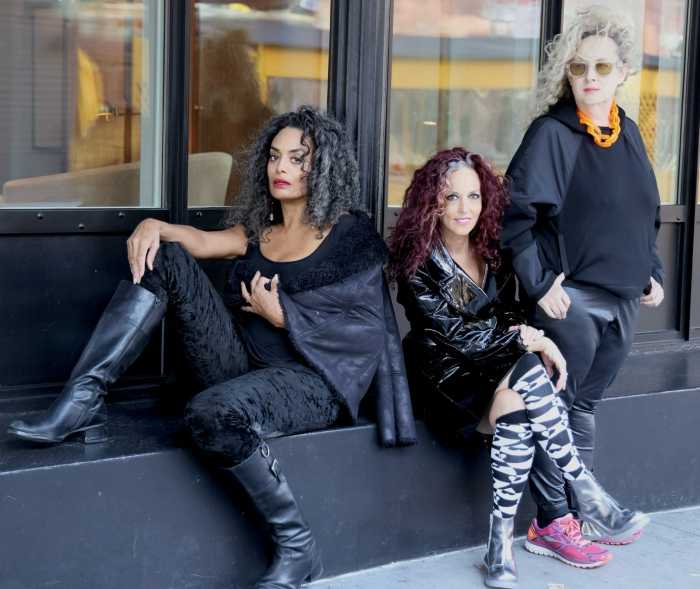A coalition of advocacy groups that work with homeless youth in New York City is expressing its “concern and alarm” over mid-year budget cuts, announced over the past two weeks by the city’s Department of Youth and Community Development (DYCD), that will reduce funding for drop-in centers by one-third to one-half and, within two years, eliminate dollars for street outreach to that population completely.
In a December 6 letter to Mayor Michael Bloomberg and DYCD Commissioner Jeanne Mullgrav, the organizations, all of whom are members of the Mayor’s Commission on LGBTQ Runaway and Homeless Youth established in October 2009, charged the cuts “will disproportionately harm LGBTQ youth.”
In a city budget of more than $60 billion, the funds at issue are miniscule. The cuts announced total $969,407 in fiscal year 2011 and $700,000 in the subsequent year, according to the advocates.
Nearly 20 percent of that first year reduction — $186,000 — will be borne by the two city-funded groups that work specifically with LGBT homeless youth: the Ali Forney Center and the Bronx Community Pride Center. Both Ali Forney and the Bronx Center have drop-in centers that are City Council-funded projects, which are losing half of their money.
For the Bronx Center, that means a reduction in budget for its drop-in center from $86,000 to $43,000. According to Dirk McCall, the Center’s executive director, its drop-in initiative was already reeling from the loss of a $425,000 three-year contract awarded to another Bronx social service agency at the time it was up for renewal.
“We’re already doing more with less,” McCall said. “The $86,000 in funding was a City Council band-aid for us.”
Most of the funding received by the Bronx Center comes from the New York State AIDS Institute to support its HIV prevention work among LGBT youth in the borough. Many of the Center’s clients experience homelessness and have immediate need for drop-in services.
For Ali Forney, the cuts amount to $143,000. In the view of Carl Siciliano, the organization’s founder and executive director, drop-in centers fill, at least in small measure, a critical void in a city where, on average, 3,800 youth are without shelter every night, while the beds available number only several hundred. LGBT youth, who often find conditions in shelters and other large institutional settings inhospitable if not downright dangerous, have even more need for drop-in services.
According to Siciliano, Ali Forney was close to the point at which it could keep its drop-in center open 24 hours a day. For youth with nowhere else to go in the overnight hours, such a venue could be the only safe and warm alternative. “With these cuts, I am back to where I was,” Siciliano said.
The letter to Bloomberg and Mullgrav was signed by well-known players in the social services world, including Covenant House, Green Chimneys, Safe Space NYC, and the Urban Justice Center, as well as LGBT-oriented groups such as the Asian Pacific Islander Coalition on HIV/ AIDS (APICHA), Congregation Beth Simchat Torah, FIERCE, Gay Men’s Health Crisis, and the Callen-Lorde Community Health Center.
The DYCD cuts come just five months after the Mayor’s Commission on LGBTQ Runaway and Homeless Youth issued a report that called for 200 new beds for LGBT youth, expanded drop-in center hours, especially for the overnight, and expanded street outreach. An estimated 40 percent of homeless young people in New York are LGBTQ-identified.
The Commission, with 25 members appointed by the mayor, was formed just weeks before last year’s city elections.
In a written statement, Brooklyn’s Lew Fidler, who chairs the City Council Committee on Youth and has focused considerable attention in recent years on the particular problems facing homeless queer young people, said, “Cutting the budget on the backs of our very most vulnerable kids — kids who are homeless, without their families, and sleeping on the street — is so wrong that words cannot express my disgust and outrage.”
In testimony December 6 before the Council Finance Committee looking at a wide array of mid-year cuts, Commissioner Mullgrav emphasized that homeless youth services had been immune to cuts over the past eight budgets and that no reduction in spending for the provision of beds had been made. In fact, she said, bed capacity has been doubled in recent years and LGBTQ-specific efforts were initiated by the city.
Andrew Doba, the department’s chief public information officer, emphasized that cuts to runaway and homeless youth were less than seven percent, below the average reduction for DYCD as a whole.
Faced with cuts across many city services, Council Speaker Christine Quinn is aggressively exploring alternative areas to cut. She told Gay City News that the Council finance staff has found $130 million in potential savings elsewhere in the budget “to prevent cuts that simply go too far.”
Quinn outlined a series of spending areas she defined as discretionary — including outside contracts for teachers’ professional development that could be done in-house at the Department of Education; program evaluations at the Health Department; air quality assessments that could be put off a year; and Sanitation Department enforcement staffing that is not generating additional revenues from fines.
“As we have done before, the Council is prepared to act in a fiscally responsible manner,” the speaker said in a written statement. “However, we must ensure these cuts do not fall disproportionately on the most vulnerable New Yorkers, including LGBTQ runaway and homeless youth.”
She told Gay City News on December 7, “We are actively negotiating with the administration on the alternative cuts we are proposing.”
Told of her comments, Fidler said he welcomed their optimistic tone, noting, “Christine Quinn is a realist.” Still, he added, “It’s hard to be optimistic in a world where people think these kinds of cuts are acceptable in the first place.”
If the Council were only able to find agreement with Bloomberg on $10 million of the $130 million in alternatives its finance staff has identified, Fidler expressed confidence that for most of his colleagues, restoring the runaway and homeless youth money would be in the top ten fixes.
Having sat through the December 6 Finance Committee hearings, however, he said he was deflated to hear about the mayor’s reaction to Quinn’s assertions that the cuts laid out by the administration need to be reviewed and revised.
According to the Daily News, Bloomberg that day told reporters that Quinn “is right that we’re going to have to have changes… These cuts don’t go to address more than maybe a third of what we think the problem is. We’re going to be going in the other direction.”




































